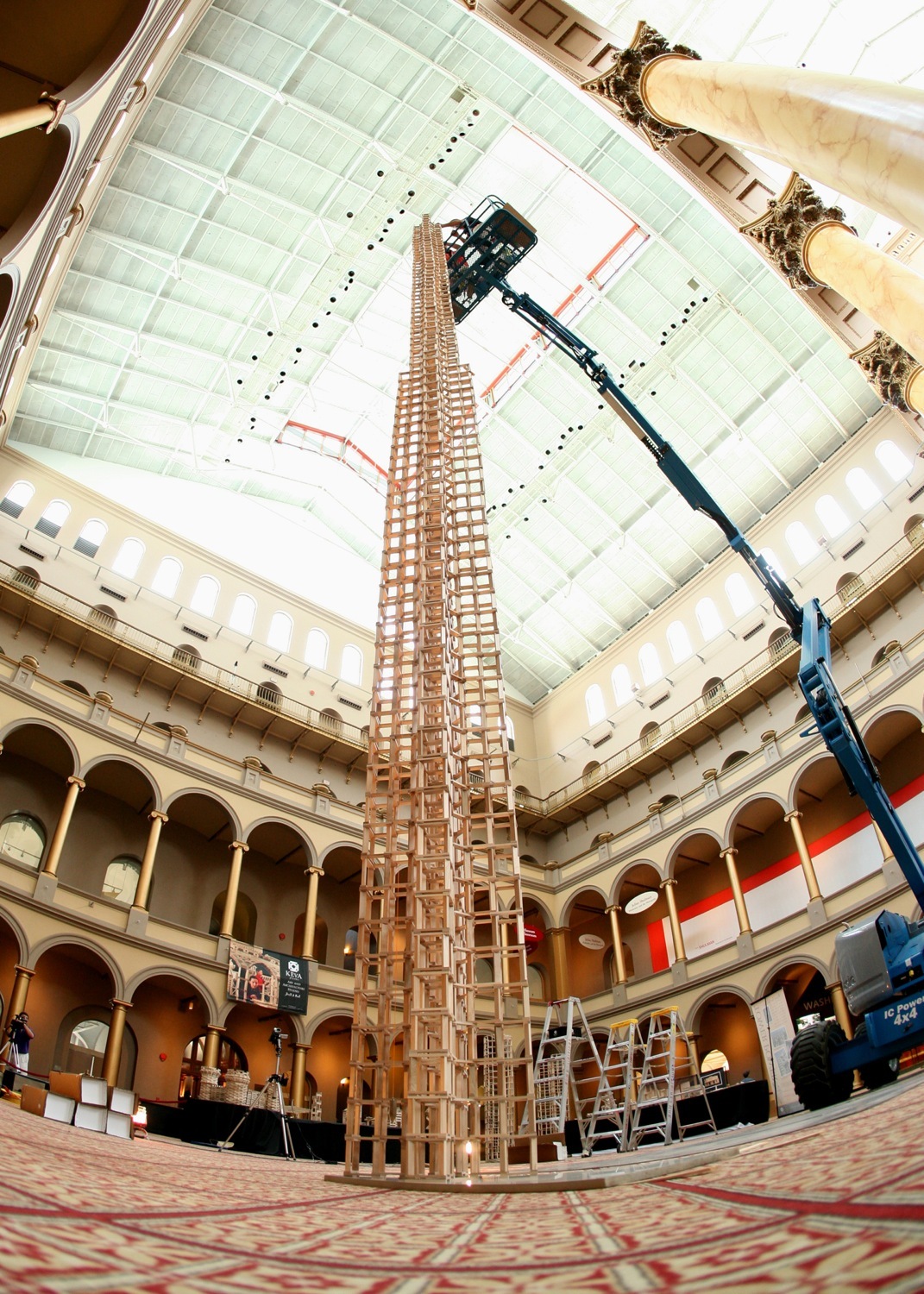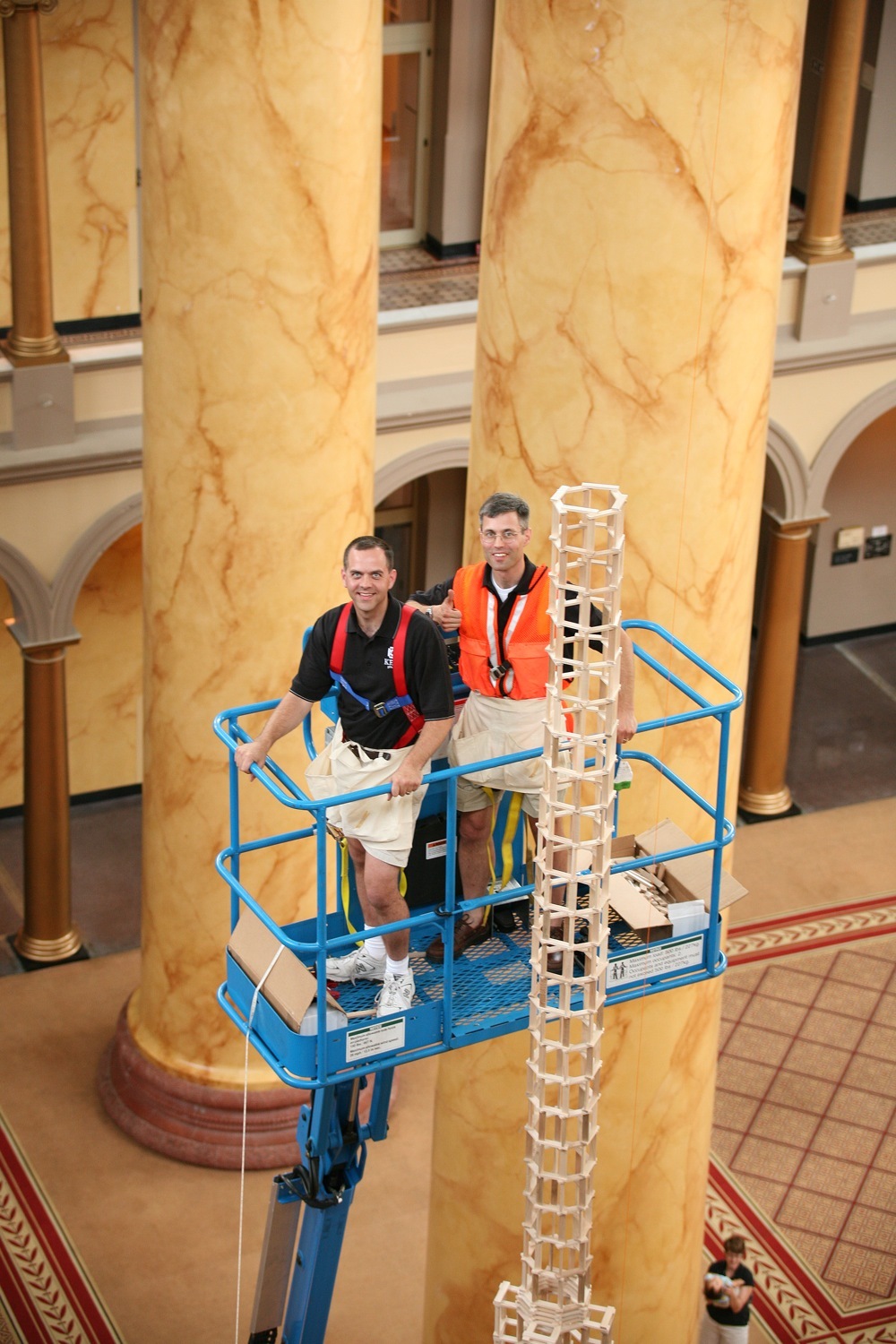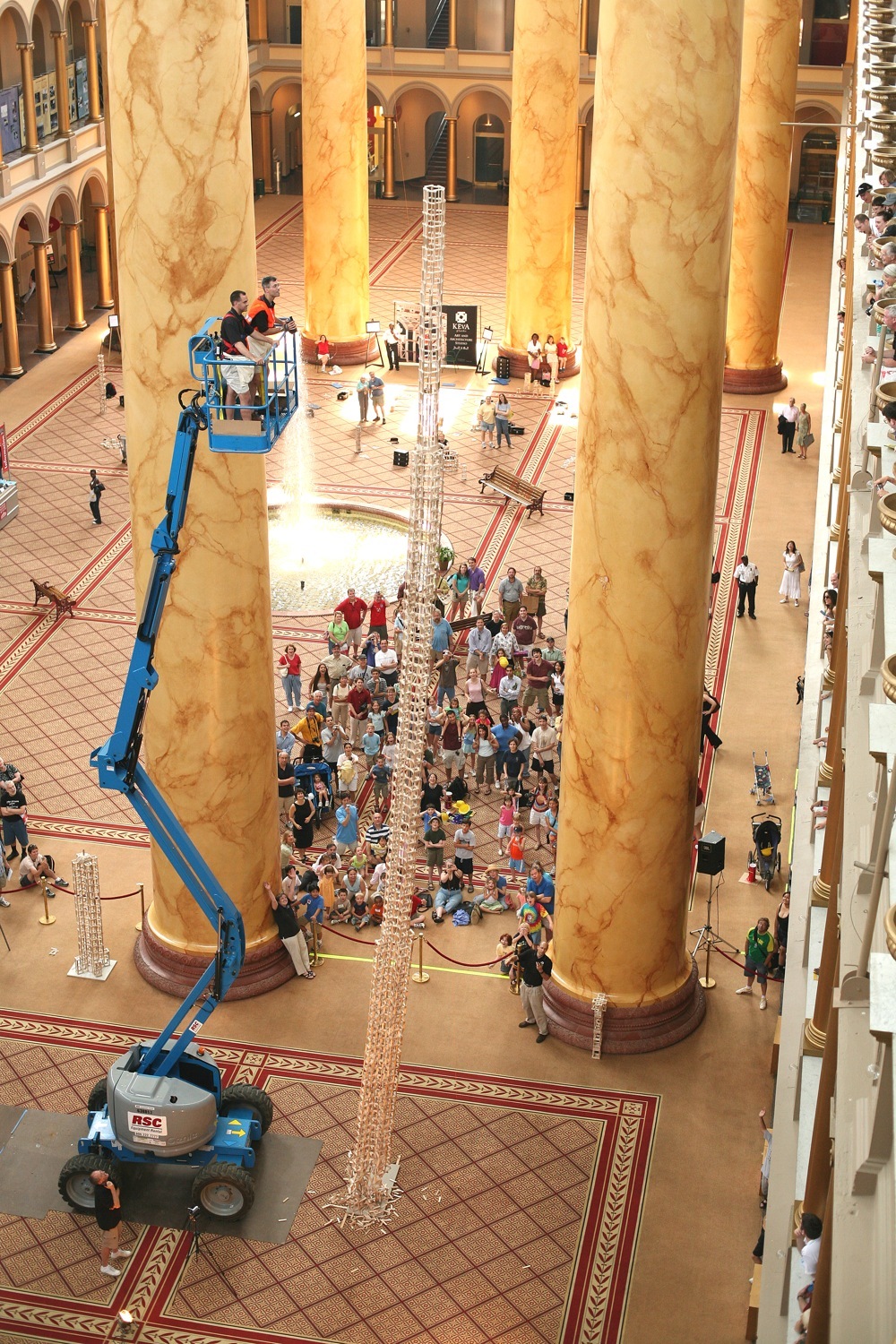



The National Building Museum in Washington, DC was a natural venue for stacking the tallest free-standing structure using KEVA planks. The team gathered Friday evening to get started on over 10 hours of construction, completed over 2 days. Chosen for their construction experience with KEVA, steady hands, attention to detail, and fearlessness at great heights, the 3-person construction team practiced various maneuvers on the 60' cherry-picker. We've seen the perfectly cut planks perform engineering marvels before, but none as high as this.
The base of the tower was a marble slab, carefully leveled on every side by wooden shims. The tower pattern is an octogon, with 4 rectangular wings of interconnected square columns. This pattern is beautiful and sturdy, capitalizing on the speed of stacking planks upright and the power of triangulation to stabilize a structure. We hung a plumbline from the ceiling, which kept the tower nearly perfectly vertical on the way up, and was ultimately used as a wrecking ball on the way down.
Museum visitors built with loose KEVA planks in a workshop area a safe distance from the tower as it went up.
Periodically, you could hear blocks trip down the center of the tower - whether accidental or for dramatic effect, we've never been quite sure. The builders were confident in the downward compression acting on the blocks to hold it steady even when they dropped planks. Every few hours, the builders took a measurement and radioed it to workers who wrote height updates for the visitors below.
As the tower reached 40' mark, we noticed it was wobbling uneasily, a few subtle centimeters from side to side. The breeze from the museum's air conditioning was an unexpected challenger to the 51' 4"" goal. Undeterred, the building team kept on, and the weight of gravity on the blocks kept the tower sturdy and standing.
At 51' 8"", the tower was complete! Spectators watched wide-eyed and mouth ajar, wondering if the tower might tumble ahead of our planned destruction, but gravity held it like a rock. To bring the tower down, we carefully pulled the plumb bob from its spot hanging beside the tower. The plumbline was still attached to the ceiling like a pendulum. Artist Foon Sham released the wrecking ball from about 15' away. Each time the plumb bob struck, there were gasps and screams from the spectators, sure it would be the final blow. After 8 swings and hits with bated breath, the tower had a 5' hole in its side, but stayed upright to the shock of the crowd. After the 12th hit, the tower finally fell!
Many people who were there or watch the video are surprised to see that the tower tilted only about 8 feet before crashing in a relatively narrow footprint.
